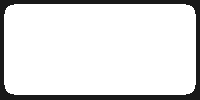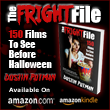Special Note: "The Hobbit: An Unexpected Journey" is the first film to be shot at a frame rate twice as fast as the normal 24fps, and said 48fps version will be showing in select theatres. Controversy has surrounded this increased film speed, but I found it exceedingly attractive and eye-popping, decreasing blurriness during quick camera movements, brightening the image (a plus for a movie that, like this one, is also in 3D), and turning high-definition into hyper-high-definition, reminiscent of viewing an image through a window rather than on a screen. When the action becomes a little too chaotic, it can be slightly disorienting and almost take on the appearance of playing at a fast-forward level, but much of that is due to what film speed moviegoers have been programmed to process for a hundred years. Will 48fps eventually replace 24fps altogether? I hope not. But for specific "event" pictures, it does have its merits.
 |
Collectively running approximately 1.600 pages, J.R.R. Tolkien's "The Lord of the Rings" trilogy was complex and absorbing, containing more than enough material to withstand a trio of three-hour adaptations. Watching the films—2001's "
The Lord of the Rings: The Fellowship of the Ring," 2002's "
The Lord of the Rings: The Two Towers," and 2003's "
The Lord of the Rings: The Return of the King"—over a decade since they were filmed, they not only hold up, but stand as the most serious and epic undertaking the fantasy genre's ever seen. "The Hobbit: An Unexpected Journey" marks Peter Jackson's (2009's "
The Lovely Bones") long-awaited return to Middle Earth, but, despite a valiant effort to seamlessly blend this new planned trilogy—prequels, all—with the older films both visually and stylistically, something is most definitely amiss this time in the Shire. To tackle all of the ways "The Hobbit: An Unexpected Journey" goes wrong, it must first be established that Jackson has opted to drag out Tolkien's single, decidedly slight 300-page novel into three features, each one of them no doubt approaching the three-hour mark. It is a fatal misjudgment, self-indulgent in the extreme, and no amount of purported additional appendices can change the fact that this first picture is bloated and tedious beyond comprehension. There are fortunately a handful of strong moments and show-stopping set-pieces, but these are the exceptions rather than the rule in a film that is exhausting in all the wrong ways.
 |
Following a pre-titles prologue depicting the overtaking of the dwarves' treasure-filled home in the Lonely Mountains by dragon Smaug, and a second prologue set moments before "
The Fellowship of the Ring" began, reintroducing Ian Holm (2005's "
Lord of War") and Elijah Wood (2006's "
Bobby") as the older Bilbo Baggins and impressionable young Frodo, the story proper finally gets underway. Set sixty years earlier, hobbit Bilbo (Martin Freeman) is now a young man, happily living his days in the Shire, when he is paid a visit by wizard Gandalf (Ian McKellen) and thirteen dwarves headed by Thorin (Richard Armitage), heir to the Lonely Mountain kingdom. Despite the dwarves' skepticism, Gandalf is well aware of hobbits' stealthy burglary skills and insists that Bilbo accompany them on their voyage to take back their home and riches. It will be a perilous journey, indeed, but as Bilbo gradually proves his worth to a doubting Thorin, they will come face to face with a host of adversaries: goblins, giants, Orcs, wolves, and a peculiar underground cave dweller named Gollum (Andy Serkis).
 |
A surefire sign that "The Hobbit" could have been made into one feature film, and been better for it: in the finished version of "An Unexpected Journey," everything seems to take three times longer than necessary to get through. Thus, when Gandalf and the thirteen dwarves crash Bilbo's home, rushing around like Kevin McCallister's relatives at the beginning of "Home Alone" and making a mess of the place before revealing their purpose for showing up, what should have taken up ten minutes of screen time runs on and on for over thirty, taking up precious time with a burping contest and not one, but two, musical numbers. By the time the dwarves are all cavorting around, singing as they wash and put dishes away, only the most forgiving, die-hard fans of "The Hobbit" won't be able to admit that director Peter Jackson has stretched this project far beyond the breaking point. Once Bilbo has left the Shire and joined everyone on their trek—an hour in, mind you—the script by Fran Walsh, Philippa Boyens, Peter Jackson and Guillermo Del Toro continues to bog itself down in superfluous asides (this must be where the noted appendices come in) and even a bit with loopy wizard Radagast (Sylvester McCoy) where he performs CPR on an unfortunate hedgehog.
 |
Overloaded with a lot of walking and talking and walking some more, would-be wondrous interludes, such as a return to the elvish kingdom of Rivendell, are rendered largely ineffective because, by this time, the film will have worn out many viewers with disinterest. Establishing shots of the glorious New Zealand landscape, once again so picturesque it legitimately looks like it could have been shot on a different planet, are also harmed by the resulting lethargy of the movie's inert pacing. Meanwhile, the return of several "Lord of the Rings" actors, like Cate Blanchett (2011's "
Hanna") as elf queen Galadriel and Hugo Weaving (2012's "
Cloud Atlas") as Elrond, overextend their welcome, on hand more out of nostalgic purposes than as natural participants in the plot. As wise wizard Gandalf, Ian McKellen (2006's "
X-Men: The Last Stand"), of course, has a much larger and more critical role, and he is as stately as ever. Martin Freeman (2011's "
What's Your Number?") is a plucky, likable Bilbo, a believable fit as a younger Ian Holm, while Richard Armitage (2011's "
Captain America: The First Avenger") is a stormy, magnetic Thorin. As for the other twelve dwarves—each with names like Balin, Dwalin, Bofur, Bifur, Fili and Kili—they are completely interchangeable outside of their physical features. Don't expect to grow attached to any of them, because it's not going to happen.
 |
Just as all hope appears to be lost, a few surges of inspiration bring temporary life to the second half. While all of the countless attacks from giants, wolves and Orcs grow repetitive very, very quickly, a sequence where our heroes find themselves caught in the middle when the mountains they're crossing come to life and start fighting is an original sight the likes of which have never been glimpsed on film before. Even better is the portrayal of Bilbo's initial contact with the One Ring and the welcome reintroduction of Gollum, played by Andy Serkis with all of the unforgettable gusto he brought to the former series of films. As Bilbo and Gollum engage in a competition of riddles, the picture finds just the right marriage between humor and foreboding. It's a great segment, making one wish that what surrounded it was as even half as taut and narratively focused.
 |
"Where did you go?" Thorin asks Gandalf in one scene after he returns to the group. "To look ahead," he replies, growing visibly tired of all the feet-dragging. And so it goes with the long-winded, altogether lesser "The Hobbit: An Unexpected Journey," which is certainly not left wanting when it comes to excellence in visual effects, costumes, art direction, the luminous cinematography by Andrew Lesnie (2011's "
Rise of the Planet of the Apes"), and majestic score by Howard Shore (2011's "
Hugo"), but is simplistic and meandering any way a person stacks it up against "The Lord of the Rings." Making it through all 169 minutes is a chore—a description one should never use to describe what is intended to be a big popcorn entertainment—and what is to follow in the next two films seems almost perplexing. With approximately six more hours to go, it's tough not to shudder at the sheer lengths director Peter Jackson is about to go to stretch this story into paper-thin taffy.



















